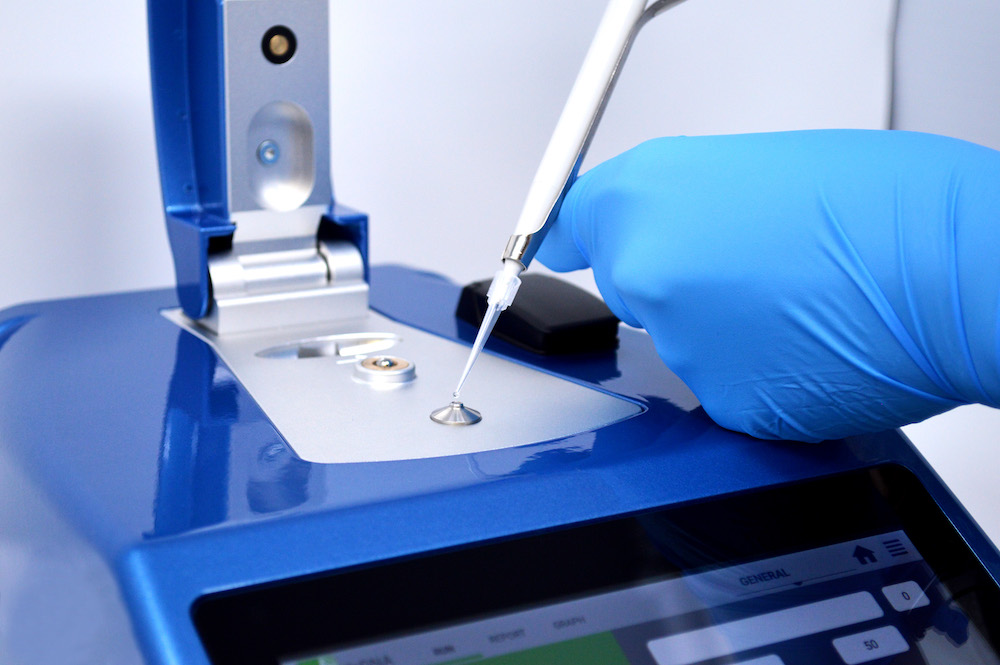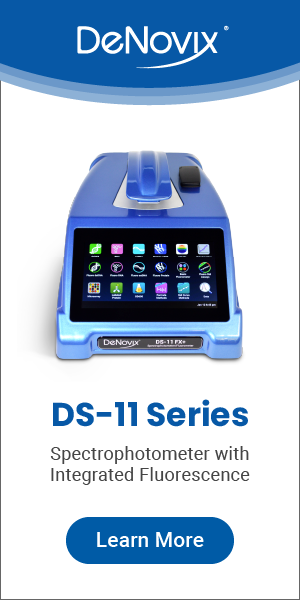UV-Vis spectrophotometry is a powerful analytical technique used in various scientific fields to measure light absorbance across the electromagnetic spectrum’s ultraviolet (UV) and visible (Vis) ranges. By measuring the intensity of light passing through a sample solution and comparing it to the intensity of the incident light, a UV-Vis spectrophotometer provides valuable information about the properties of materials and their interactions with light. This blog post will examine the components, working principles, applications, and advantages of UV-Vis spectrophotometry.
How a UV-Vis Spectrophotometer Works
When incident light hits an object, it can be absorbed, reflected, or transmitted. The spectrophotometer measures the intensity of light absorbed across the UV and Vis ranges. Light transmitted through the sample is measured and compared to a reference measurement of the incident light source. By applying the Beer-Lambert Law, which states that the amount of light absorbed is directly proportional to the concentration of the sample and the path length, the spectrophotometer can determine the concentration of specific analytes in the sample.
Basic Components of a UV-Vis Spectrophotometer
A UV-Vis spectrophotometer consists of several key components that work together to enable accurate and precise measurements:
- Entrance Slit: This controls the width and alignment of the incident light beam, ensuring the sample is illuminated consistently.
- Collimating Mirror: The collimating mirror focuses the light beam, making it parallel before it enters the monochromator.
- Monochromator: The monochromator separates the different wavelengths of light, allowing only a narrow band of wavelengths to pass through to the sample.
- Sample Holder: The sample holder, typically a cuvette or parallel sample pedestal for microvolume instruments, holds the sample solution in place, enabling the light to pass uniformly through the sample.
- Detector: The detector measures the intensity of light reaching it after passing through the sample. Common detectors used in UV-Vis spectrophotometers include photomultiplier tubes and CCD detectors.
Applications of UV-Vis Spectrophotometry
UV-Vis spectrophotometry finds widespread applications in various scientific disciplines. Some notable applications include chemical analysis, nucleic acid and protein analysis, and many others. We look at them in more detail below.
Chemical Analysis
UV-Vis spectrophotometry is widely used in teaching and industrial materials science labs to quantify biomolecules, organic compounds, and inorganic metals. It is a favored method due to its ease and speed of use.
Microvolume Analysis
With advancements in technology, modern UV-Vis spectrophotometers are capable of analyzing microvolume samples as small as 0.5 microliters, making them suitable for limited sample volumes.
Nucleic Acid and Protein Analysis
The concentration of nucleic acids and proteins can be accurately determined using UV-Vis spectrophotometry, enabling essential applications in genetics, molecular biology, and biochemistry. Many instruments come with preconfigured or defined dyes and protein types for ease of use.
Pharmaceutical Research
In the pharmaceutical industry, UV-Vis spectrophotometry plays a crucial role in identifying and quantifying compounds in pharmaceutical products, ensuring their quality and efficacy.
Purity Testing
UV-Vis spectrophotometry is employed to assess the purity of DNA samples, ensuring their suitability for various downstream applications such as PCR and DNA sequencing.
Quality Control and Analysis
The technique is widely used in industries such as pharmaceuticals, food, and cosmetics to ensure the quality and consistency of materials and products.
Advantages and Disadvantages of UV-Vis Spectrophotometry
UV-Vis spectrophotometry offers several advantages that make it a versatile and valuable analytical tool in various scientific fields.
Easy-to-Use Nature
The technique is relatively straightforward, and modern spectrophotometers often come with user-friendly software interfaces, making them accessible even to non-experts.
Non-destructive
UV-Vis allows for non-destructive analysis and can be applied to a wide range of chemical species. This allows samples to be studied repeatedly as they will not be damaged, a benefit highly important for quality assurance and quality control purposes.
Quick Analysis
UV-Vis spectrophotometers provide fast and efficient analysis, allowing researchers to obtain results within a few seconds. It is used to quantify nucleic acid and protein content in biological samples and for quality control in drugs and food industries.
However, UV-Vis spectrophotometry has some disadvantages compared to methods such as fluorescence quantification. It exhibits lower sensitivity and selectivity, limiting its effectiveness in certain applications. The accuracy of absorption measurements can be influenced by stray light, potentially affecting spectra measurement accuracy1,2, a key consideration in the design of spectrophotometers.
UV-Vis spectrophotometry is an essential analytical technique utilized in various scientific fields for measuring light absorbance across the UV and visible ranges. Its non-invasive nature, quick analysis ability, and broad range of applications make it a valuable tool in chemistry, biology, pharmaceuticals, food and beverage, and material science.
UV-Vis Spectrophotometry with DeNovix
Continued advancements in UV-Vis spectrophotometry will further enhance its capabilities, enabling scientists to gain deeper insights into the properties of materials and their interactions with light. Are you interested in learning more? DeNovix can help with that.
DeNovix has revolutionized spectrophotometry with its DS-11 Series, offering exceptional performance and versatility. This compact instrument combines full-spectrum UV-Vis analysis with fluorescence capability, making it the perfect solution for rapid nucleic acid and protein quantification.
Not only does the DS-11 Series offer outstanding performance, but it also excels in usability. The instrument features EasyApps™, a powerful and intuitive software. Combined with the user-friendly touchscreen interface, this software ensures error-free operation and delivers sample-to-data results in under 3 seconds. Setting up the instrument is just as easy as it is ready to use straight out of the box, requiring no PC setup or software installation.
Whether quantifying nucleic acids or proteins, performing UV-Vis or custom measurements, conducting fluorescence assays, or analyzing kinetics, the DS-11 Series offers preconfigured apps and features that optimize workflows and provide accurate results.
Contact a member of DeNovix today and learn more about UV-Vis spectroscopy.




